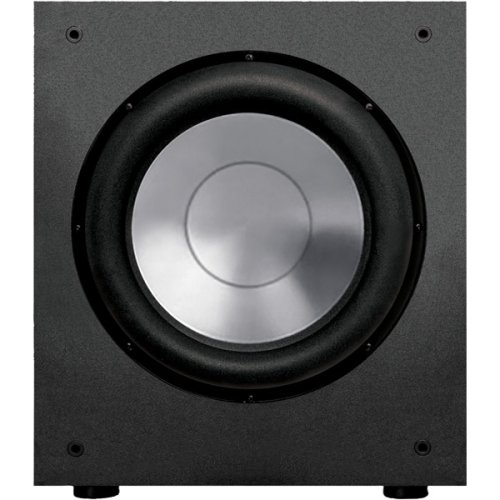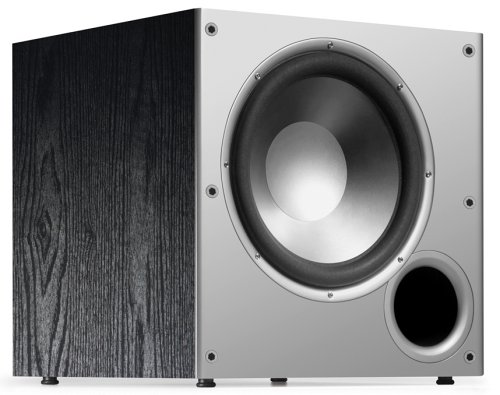Save on Home Powered Subwoofers. Free Shipping on all Subwoofers! TheDeepDiscount. Kohler Residential Power Home Powered Subwoofers.
Saturday, December 31, 2011
Tuesday, December 20, 2011
Eliminating that Terrible Hum From Your Home Theater Speakers
You've all heard it, that dreaded 60Hz hum through the speakers of a home theater or house audio system. Hopefully you heard it at a friend's house and not your own. It can drive you completely nuts. You may have even tried, unsuccessfully, to fix the little noise problem. That can make you even more crazy. What causes that horrendous noise through your speakers?
More often than not humming through your speakers is caused by a grounding problem. There are three main ground problems that cause problems in an audio / video system. These are ground loops, improper grounding and lack of a ground altogether. The other possible culprits that can cause noise are bad cables, a faulty piece of equipment or electrical noise from a lighting dimmer or electric motor. There are steps you can take to troubleshoot the noise and eliminate it from you theater.
The first step is find out where it is coming from. Disconnect your source and display equipment from your receiver or surround sound processor. If the noise stops, connect them back to the receiver or processor on at a time until the noise returns. When the hum comes back, you found where the noise is entering your system. Note that if you are connecting remote equipment, such as running the signal from your theater room DVD player to the TV in the bedroom, your chances to pick up noise increase dramatically. With such long runs, noise can be induced into the long cable runs from adjacent electrical wiring. It is also easy to create a ground loop, because the equipment is plugged into two different, widely separated outlets, on different electrical circuits.
If the noise is caused by a cable box, the noise is likely caused by the cable TV ground. To test this theory, disconnect the incoming cable TV feed to the rear of the cable box or TV while they are still connected to the rest of the system. If the noise is eliminated by disconnecting the TV cable, the problem is the cable TV ground. You can electrically decouple the cable TV feed from your system with a ground breaking transformer. These are available from many sources. Be advised that many newer, digital cable TV systems require any device in the signal chain to pass a full 1,000 Mhz. Some of the older ground break transformers will not do this. Be sure to check the specifications of whatever device you are purchasing to verify it will pass the digital cable TV signal.
If the noise is from your projector, TV, or monitor, it is most likely caused because the video display device is plugged into a different outlet than the other a/v equipment. It could be on a different circuit as well. These circuits may have two different ground potentials. That is, the resistance to ground is different on each circuit. A difference in resistance to ground from one ground point to another can cause the dreaded ground loop. If you get a ground loop, current flows between the two components. If the current flows through the components internal audio signal ground, you will get a hum.
You can use an isolation transformer, similar to the type used for cable TV ground problems, to eliminate the electrical connection from one component to the other. These transformers are inserted in line with the audio signal connection between the two components. If there is no audio connection between the components, the problem may be current flowing through the video portion. In this case, a video isolation transformer should be used to eliminate the ground loop.
Sometimes power conditioners will stop noise problems by placing equipment on different, electrically isolated outlets. This is done using isolation transformers. Sometimes this is ineffective however, due to the differences in internal construction of different power conditioning equipment. Some safety regulations, such as UL 1950, specify that an isolation transformer is only allowed to isolate the hot and neutral wires; the grounding wire must be passed straight through. If this is the case, the ground loop problem may still exist because many communication circuits are connected to the grounding conductor and not the neutral. In this case, the isolation transformer, or any power conditioner or UPS with an isolation transformer will have absolutely no affect on the grounding problem.
The noise may be generated externally, from a dimmer or refrigerator compressor for example, and coming in through the main power input on the audio video equipment. In this case, a high quality power conditioner may be effective in reducing or eliminating the noise problem. You may also find that one of the signal interconnecting cables in your system is faulty. This can also cause noise problems. Check for this by swapping the cables with one that you know to be good.
You can solve most noise problems in your home theater or multi room audio/video system by taking the systematic, step-by-step approach. Work your way up the signal chain, eliminating each piece of equipment as you go. If you have nothing connected to your speakers except the speaker wiring, and they still hum, the problem is noise induced into the speaker wiring from adjacent power cables. Other than that case, most problems are caused by ground problems, which you can find, and solve, if you take it one step at a time.
Sunday, November 27, 2011
Thursday, November 17, 2011
New Black 250 Watt Surround Sound HD Home Theater Slim Powered Active Subwoofer SUB8S
!9# New Black 250 Watt Surround Sound HD Home Theater Slim Powered Active Subwoofer SUB8S
Brand : Theater SolutionsRate :

Price : $109.99
Post Date : Nov 18, 2011 00:44:15
Usually ships in 1-2 business days
Specifications
New Ported Powered Subwoofer
Slim 4 3/4" Height Design Fits Under Most Furniture
8" High Efficiency Low Frequency Transducer
100 Watts RMS & 250 Watts Max In Cabinet Amplifier
35-150 Hz Frequency Response
24 db per Octave Crossover
High Level Input L/R Speaker Spring Terminals
L/R RCA Inputs
Built-in Auto Shut Off
Stand Mounts, Wall Mount and Mounting Screws Included
RCA Cables, "Y" RCA Adapter and Full Instructions Included
Dimensions are Height 4 3/4" x Length 24 5/8" x Depth 15 3/4"
This Theater Solutions Powered Floor Subwoofer is newly designed for consumers who demand extra powerful bass for their home theater experience. High quality, lush bass and a full bodied sound at an affordable price. This speaker is perfect playing movies or mega bass rap music. Made with only the highest quality, moisture resistant materials to deliver unsurpassed sound in any listening environment. Sophisticated design and measurement equipment, including computer assisted design software were used to design this powered subwoofer to achieve an optimized balance and interface between components to give better quality performance and longer life.
Thursday, October 20, 2011
Logitech Z Cinéma Advanced Surround Sound System--2.1 Speakers
!9# Logitech Z Cinéma Advanced Surround Sound System--2.1 Speakers
The Logitech Z Cinema Advanced USB Surround Sound System immerses you into SRS TruSurround HD technology. With 2 satellite speakers and a subwoofer, digital sound is delivered every time you play your favorite games, music or watch your movies. It features a unique three-amp design for crystal-clear response. Raise your multimedia applications a notch with the Logitech Z Cinema Advanced USB Surround Sound System.
More Specification..!!
Bowflex Weights Quickly Bissell 21k3 Compare Similac Baby Quick
Friday, October 14, 2011
Sunday, October 9, 2011
Sunday, September 25, 2011
Connect a handset to your home theater
Cheetah Print Comforter Order Now Comparison Cs55 Plantronics
Wednesday, September 7, 2011
Sunday, September 4, 2011
Monday, August 29, 2011
Polk Audio PSW110 10-Inch Powered Subwoofer (Single, Black)
!9# Polk Audio PSW110 10-Inch Powered Subwoofer (Single, Black)
Rate :
 |
Price : Too low to display |
Post Date : Aug 30, 2011 05:55:06
|
Price : Too low to display |
Post Date : Aug 30, 2011 05:55:06Usually ships in 1-2 business days
This new Powered Subwoofer delivers powerful, accurate and musical bass at shockingly low prices. Built for power and value, the new models represent a continuing refinement of the highly regarded PSW Series and a great introduction to visceral home theater bass performance. Loud & Low Specs(CEA2010): Low 114.6 db / Ultra 86.7 db
Bose Multimedia Speakers Purchase Purchasing Bose Acoustimass Speaker System
Tuesday, August 23, 2011
Onkyo SKW204 Bass Reflex Powered Subwoofer (Black)
!9# Onkyo SKW204 Bass Reflex Powered Subwoofer (Black)
 |
Price : Too low to display
|
Price : Too low to displayPost Date : Aug 23, 2011 17:57:06 | Usually ships in 1-2 business days
Impress yourself with the earth-shakingly realistic bass pumped out by this 230W subwoofer. A lot is packed into LFEs (Low Frequency Emissions), which you can find in more and more movies and music these days. Rest assured, you won't miss a thing with the SKW-204. Features like crossover control and a phase invert switch let you fine-tune the bass output from this subwoofer to match the wide variety of speakers on the market.
More Specification..!!
Klipsch Center Channel Speakers Get It Now! Ncstar Mark 3 Order Now
Wednesday, August 17, 2011
Thursday, August 11, 2011
Monday, August 8, 2011
BIC America F12 12-Inch 475-Watt Front Firing Powered Subwoofer
!9# BIC America F12 12-Inch 475-Watt Front Firing Powered Subwoofer
Brand : BICRate :

Price : $141.13
Post Date : Aug 08, 2011 16:36:11
Usually ships in 3-4 business days
For more than 50 years, midrange and high frequency horns have been the hands-down choice for movie theater sound engineers. From the softest whispers... To the highest impact sound... Hrn drivers have no equal when it comes to clarity and dynamic range. The BIC Formula Theater Series carries on the legacy of the first Formula Series introduced in 1973. They offer an output capability of up to 116dB (live rock band levels), while offering refinements that surpass all of its predecessors. Injection molded long throw woofer; BASH designed amp. Adjustable crossover, volume and auto on/off. Speaker level and RCA inputs. Frequency response: 25Hz-200Hz. 15" W x 17" H x 18 1/4" D. Sold individually.
Sony 3.1 Sound Bar Buy Wavemaster Bag Clearance Sale Best Buy White Noise Machine Marpac
Wednesday, July 27, 2011
Monday, July 25, 2011
Polk Audio PSW10 10-Inch Monitor Series Powered Subwoofer (Single, Black)
!9# Polk Audio PSW10 10-Inch Monitor Series Powered Subwoofer (Single, Black)
 |
Price : $94.18
|
Price : $94.18Post Date : Jul 25, 2011 11:26:56 | Usually ships in 1-2 business days
Do away with distortion. While the Polk Monitor Series PSW10's 10" driver and 50W built-in amplifier are filling out your home audio's bass tones, a wide variety of distortion-reducing technologies - including laser Klippel Distortion analysis - deliver bass true to the source.













